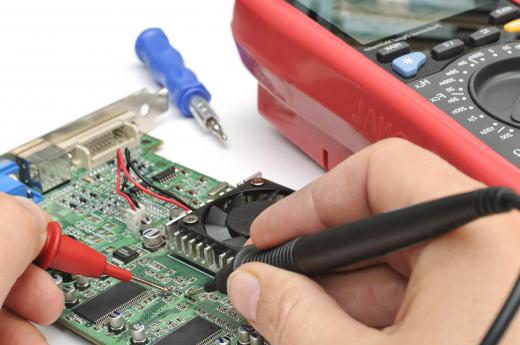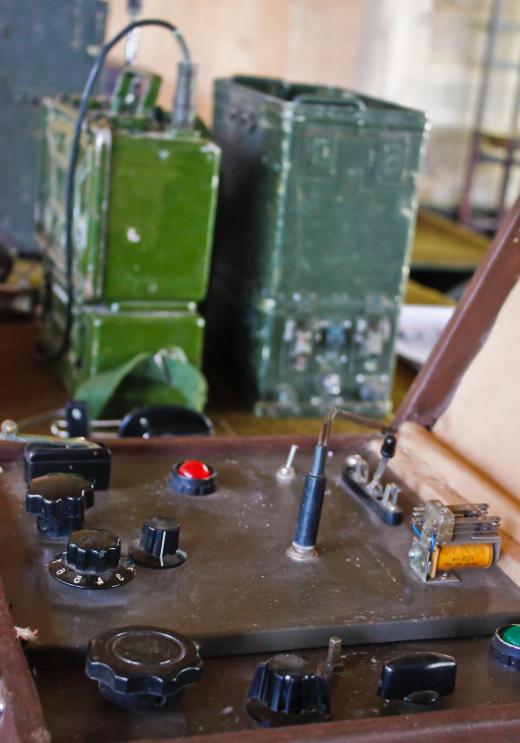A variable capacitor is a special type of capacitor, most commonly used for tuning radios, which allows the amount of electrical charge it can hold to be altered over a certain range, measured in a unit known as farads. Regular capacitors build up and store an electrical charge until it's ready to use. While a variable capacitor stores the charge in the same fashion, it can be adjusted as many times as desired to store different amounts of electricity. Since the most common use for the variable capacitor is in the tuning mechanisms of radios and older TV sets, it often goes by the name tuning capacitor or variable tuning capacitor.
When altering a variable capacitor, the user is actually changing its capacitance. Capacitance means the amount of energy the capacitor can store. A bigger capacitance means more stored energy. This energy is measured in farads, but because a variable capacitor typically has a very small capacitance, a smaller unit known as a picofarad is used instead.

Two types of variable capacitors include air variable capacitors and vacuum variable capacitors. While each performs the same function, one uses a high vacuum instead of air to insulate the capacitor. This allows for a higher capacitance to be produced in a smaller-sized capacitor. Variable capacitors can also be controlled mechanically or electronically. The electronically controlled capacitors change their capacitance based on DC voltage applied to it, while the mechanically controlled versions are designed so the parts can be moved to increase or decrease capacitance.

One of the most common uses for variable capacitors is in radios to allow the radio to tune to different stations. The capacitor is part of an LC circuit where the L stands for an inductor and the C stands for a capacitor. This inductor/capacitor combination uses the variable capacitor to alter the frequency passing through the LC circuit and thus connect with radio stations, each of which operates on a different frequency that the LC circuit must match to receive.
The ability to change the amount of electrical charge it can hold is the variable capacitor's main advantage over a regular capacitor. It allows the user to adjust the capacitor on objects, such as radios, which constantly need to connect with different frequencies. To change back and forth like this without variable capacitors would require a different capacitor for each frequency and would be impractical, if possible at all. The major disadvantage is the relatively small range they can cover. Typically they only change over a limited range and these values are of small capacitance to begin with.
